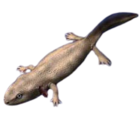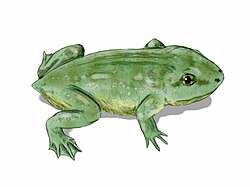Dermophiidae
In this article, we will thoroughly explore the topic of Dermophiidae, a topic that has captured the attention of people of all ages and walks of life. From its importance in history to its relevance today, Dermophiidae has been the subject of study and interest for researchers, academics and enthusiasts alike. Through a comprehensive analysis, we will examine the various aspects related to Dermophiidae, from its origins to its impact on modern society. With the intention of providing a complete and detailed overview of Dermophiidae, this article will delve into its many facets, offering a broad and enriching perspective to understand its true meaning and scope.
This article includes a list of references, related reading, or external links, but its sources remain unclear because it lacks inline citations. (October 2012) |
| Dermophiidae | |
|---|---|

| |
| Dermophis mexicanus | |
| Scientific classification | |
| Domain: | Eukaryota |
| Kingdom: | Animalia |
| Phylum: | Chordata |
| Class: | Amphibia |
| Order: | Gymnophiona |
| Clade: | Apoda |
| Family: | Dermophiidae Taylor, 1969 |
| Genera | |
The Dermophiidae are a family of neotropical caecilians. They are found in Central and South America, and Africa. Like other caecilians, they superficially resemble worms or snakes.
They are the only viviparous caecilians (species that give birth to live young) with secondary annuli (rings around the body).
Species
- Genus Dermophis
- Dermophis costaricense
- Dermophis glandulosus
- Dermophis gracilior
- Dermophis mexicanus - Mexican burrowing caecilian
- Dermophis oaxacae
- Dermophis occidentalis
- Dermophis parviceps
- Genus Geotrypetes – West African caecilians
- Geotrypetes angeli
- Geotrypetes pseudoangeli
- Geotrypetes seraphini, Gaboon caecilian
- Genus Gymnopis – wet forest caecilians
- Genus Schistometopum – Guinea caecilians
References
- Nussbaum, Ronald A.; Mark Wilkinson (1989). "On the Classification and Phylogeny of Caecilians". Herpetological Monographs (3): 1–42. doi:10.2307/1466984. JSTOR 1466984.
- Frost, Darrel R. (2019). "Dermophiidae". Amphibian Species of the World: an Online Reference. Version 6.0. American Museum of Natural History, New York, USA. Retrieved 7 October 2019.
- AmphibiaWeb: Information on amphibian biology and conservation. . 2004. Berkeley, California: AmphibiaWeb. Available: http://amphibiaweb.org/. Retrieved 26 August 2004



